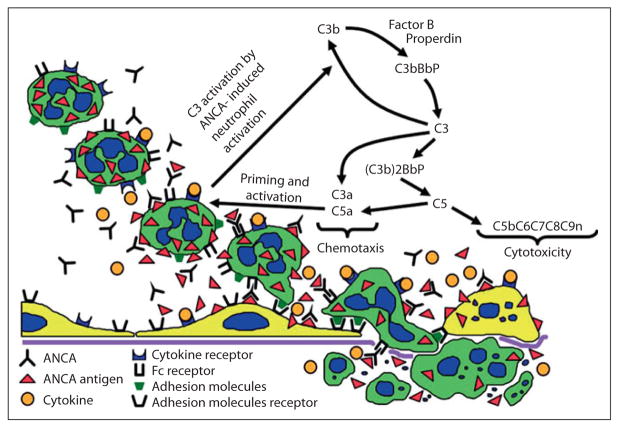Fig. 2.
Depiction of a hypothesis for the pathogenic events in ANCA vasculitis and glomerulonephritis. Beginning in the upper left, cytokines or other priming factors, such as TNF-α and C5a, induce neutrophils to express more ANCA antigens at the cell surface where they are available for binding to ANCA. ANCA engagement of antigen activates neutrophils by both Fc receptor engagement and direct Fab′2 binding to antigen. Activated neutrophils release toxic factors that cause apoptosis and necrosis of endothelial cells and other vessel wall components. Neutrophils that have been activated by ANCA also release factors that trigger the alternative complement pathway, which generates mediators such as C5a and C3a that amplify the intensity of ANCA-induced inflammation, in part by additional priming additional neutrophils for interaction with ANCA. Modified with permission from [26].

